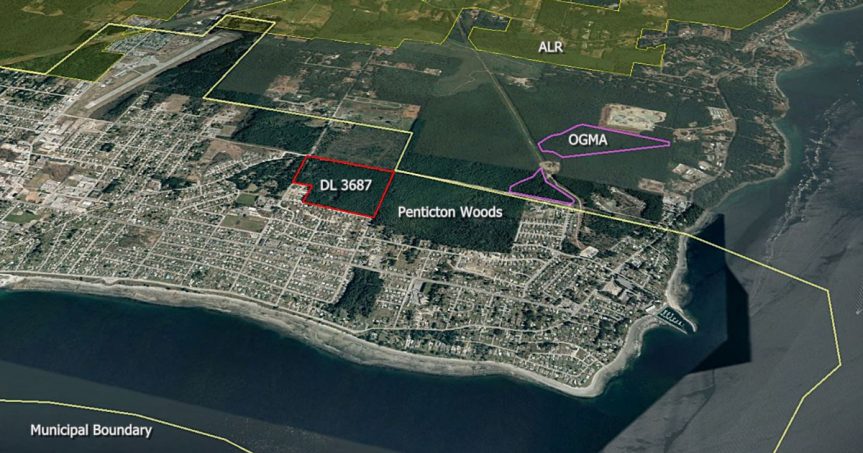
This Google Earth image also shows the municipal boundary, the Agricultural Land Reserve (ALR), and older forests classified as Old Growth Management Areas (OGMA).
Buying the farm
The “incubator farm” idea has been shelved – because “farming groups said they were not in favour“.
I have no opinion about that. Incubator farms seemingly work really well in some situations.
But a couple of other things caught my eye when I looked again.
Incubator farm location
The “New Ground” proposal as crafted by the Powell River Educational Services Society (PRESS) makes no mention of the “Sino-Bright parcel” on Lot 450. That really surprised me – because according to the public meetings I attended, that’s where it was slated to go. For example, on 6 June the Peak reported that:
“The location of the incubator has yet to be decided, but [Mr.] Randolph said its preferred location is within the residual agricultural reserve land that Sino Bright School BC (SBSBC) intends to purchase from PRSC Land Development, a corporation owned by the city and Tla’amin Nation, if that deal goes through.”
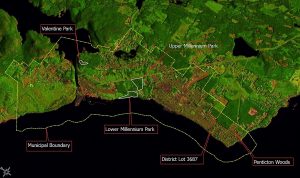
This Landsat 8 image uses bands 7-6-4, making mature forests appear very dark green.
Built-up urban areas and new cutblocks appear reddish-brown, while regenerating forests appear as very light green.
In fact, the New Ground proposal considered only a single area: District Lot 3687. I didn’t know where that was, so had to look it up.
Zooming out at bit (Landsat flies 705 km overhead), we can see that:
- DL 3687, combined with adjacent Penticton Woods, is one of 3 large blocks of forest remaining within city limits.
- Along with Millennium Park, the area is the only substantial chunk of forest owned by the City.
- These and other lands (the Sino-Bright parcel, and the Valentine/Pole-line PMFL) represent a last chance – to realize the original “garden city” vision of a community surrounded by a “green belt of trees and parkland”.
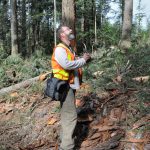
it’s always somebody else’s…
Other elements of the New Ground proposal deserve mention. The cost of tree-cutting and stump-removal wouldn’t have been trivial – $240,000 to get 20 acres “into production”. But I cringed to see that forest described as “vacant land”.
I did like the idea of a “global inventory of flora and fauna using or occupying site and bordering areas”, but that item didn’t merit a line-entry in the budget. Some apparently believe that such inventories are easy, or cheap. They’re not.
In any event, the incubator farm idea is on hold, and I suspect it’s unlikely to re-emerge for the Sino-Bright parcel either. I don’t mind. From my perspective, converting healthy forests into marginal cropland is intrinsically a bad idea.
But what still really irks me is this:
Once again a major land redevelopment was contemplated – one that would have involved clearing a large forested area – and that fact wasn’t made part of the public discussion.
Fuel loads, wildfire and biodiversity
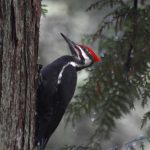
A second issue became apparent during walks in the area for the Christmas Bird Count. The birds were nice, but mostly I was struck by the evidence of recent brush-clearing. The impacts were both obvious and extensive.
Time for more research.
It didn’t take long to figure things out. Back in 2014, the Regional District had enlisted a consulting firm, Blackwell and Associates, to prepare a Community Wildfire Protection Plan. Said plan, which you can read here, is both thorough and detailed.
In a nutshell, the report sought to map the Regional District in terms of “fuel loads”. The idea is that the risk of damage to property through wildfire can be minimized if you manage those loads. Makes sense. Nobody wants another Kelowna or Fort McMurray disaster in the “wildland-urban-interface”.
Accordingly, one of the recommendations was:
“The Regional District should work with forest operators (e.g., licensees, woodlot operators, private land owners, etc.) to reduce fire risk in their operating areas…”
Things moved quickly, as was reported by various sources on 21 March, 21 Sept and 12 Oct of 2016. That’s why parts of Penticton Woods and District Lot 3687 look the way they do (see the slide-show at upper right).

That’s also why my recent rambles in the woods made me think long and hard about Pacific Wrens, Wilson’s Warblers, mushrooms, beetles, ants, frogs, salamanders and, yes, toads.
There’s a wealth of scholarly work on the effects of forest understory removal upon low-nesting birds, small mammals and, in particular, amphibians.
One 2004 review of studies from forests in the Pacific Northwest concludes that while more scientific work on the subject is needed;
“Today, the challenge is to maintain biodiversity in western forests in the face of intense political pressures designed to “prevent” catastrophic fires.”
The bottom line
The key issue here, as is often the case, is whether it’s a good idea to make land decisions based on single criteria, or a single report. Removing “downed and woody debris” is a good prescription for eliminating fire hazard, but will pretty much ruin the habitat for many other species. Standing snags are dangerous for fallers, but critical for cavity-nesting birds. Incubator farms are great if they help young farmers get into the farming business – and silly if they don’t.
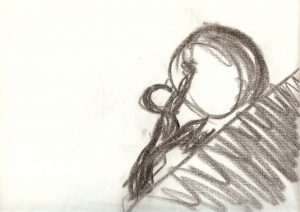
….I’m so glad I got that off my chest
I can’t help but occasionally feel like Sisyphus, wondering when or if we will collectively “get it”, and realize that the value of an urban forest is more than just logs to the barge, or fodder for the next brilliant idea about what to do with “vacant land”.
Because…It’s…Not…Vacant…Land
. (period)

